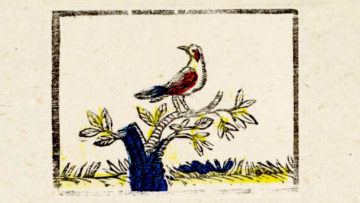Kimon de Greef in Guernica:
 Last winter, Ray Harinarain, a heating and air-conditioning contractor living in Brooklyn, flew home to Guyana with several thousand dollars in cash. Escorted by armed guards, he drove from village to village, examining wild finches like some veterinary talent scout. The birds had been captured in nearby forests using glue strips or nets. Some were visibly frightened by life in captivity. A few had begun the halting process of habituation, waiting on their perches instead of bashing against the bars. And the “baddest” birds—which in Guyanese patois means the best birds—were just about ready to burst into song.
Last winter, Ray Harinarain, a heating and air-conditioning contractor living in Brooklyn, flew home to Guyana with several thousand dollars in cash. Escorted by armed guards, he drove from village to village, examining wild finches like some veterinary talent scout. The birds had been captured in nearby forests using glue strips or nets. Some were visibly frightened by life in captivity. A few had begun the halting process of habituation, waiting on their perches instead of bashing against the bars. And the “baddest” birds—which in Guyanese patois means the best birds—were just about ready to burst into song.
The chestnut-bellied seed finch, known in Guyana as the towa-towa, is at the center of a lucrative underground trade that culminates in Queens, New York, where immigrant Guyanese men engage the birds in elaborate, secretive competitions. Male finches sing to attract mates and intimidate their rivals; owners and spectators bet on them, awarding victory to the bird that sings most vigorously. The competitions, or “races,” resemble a kind of bloodless cockfighting—at once a display of human and avian masculinity. And yet the song, clean and delicate, is archetypically sweet, like something you might hear on a recorded meditation.
The tradition known as “birdsport” has given rise to a lucrative underworld business, with champion finches selling for as much as nine thousand dollars.
More here.
